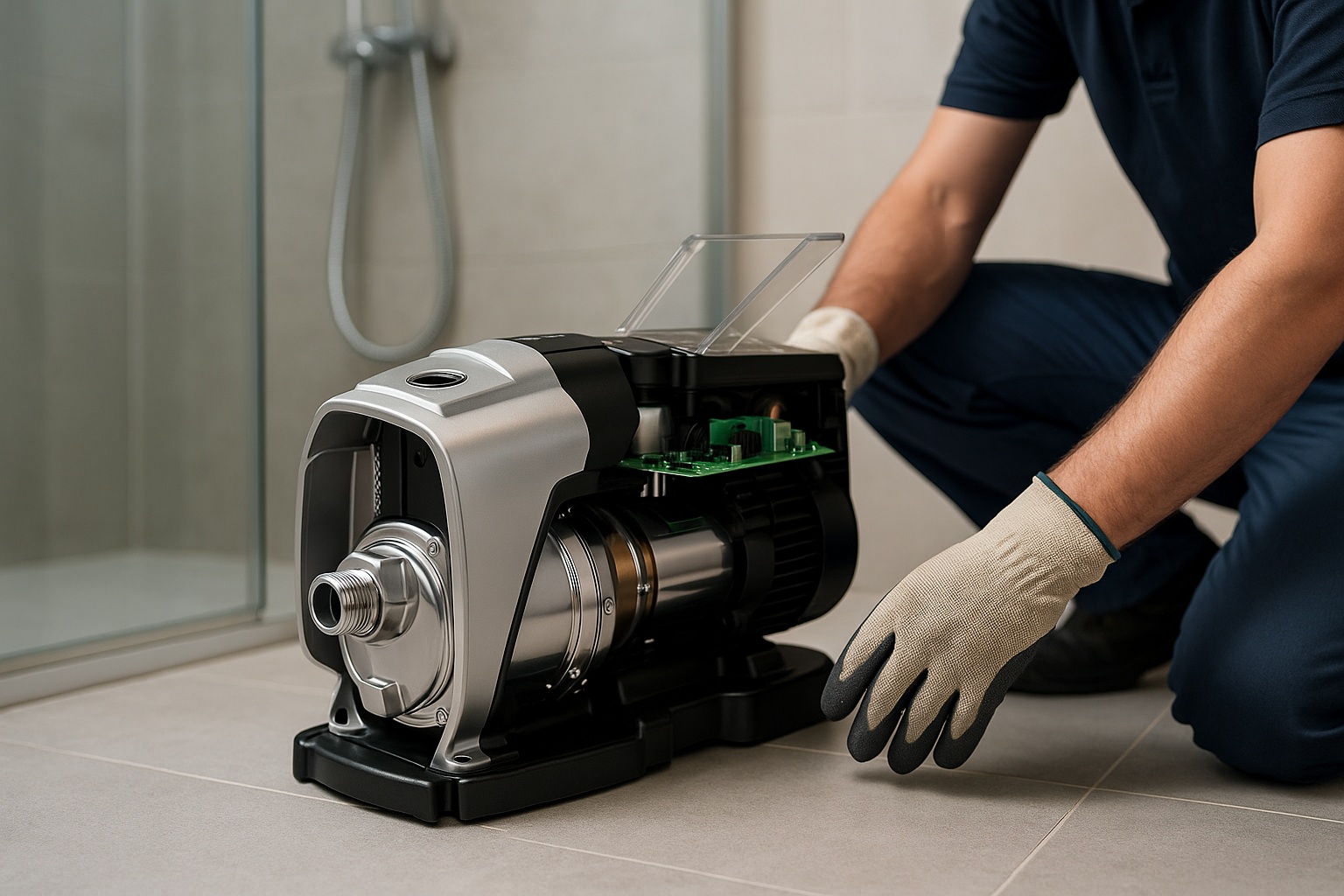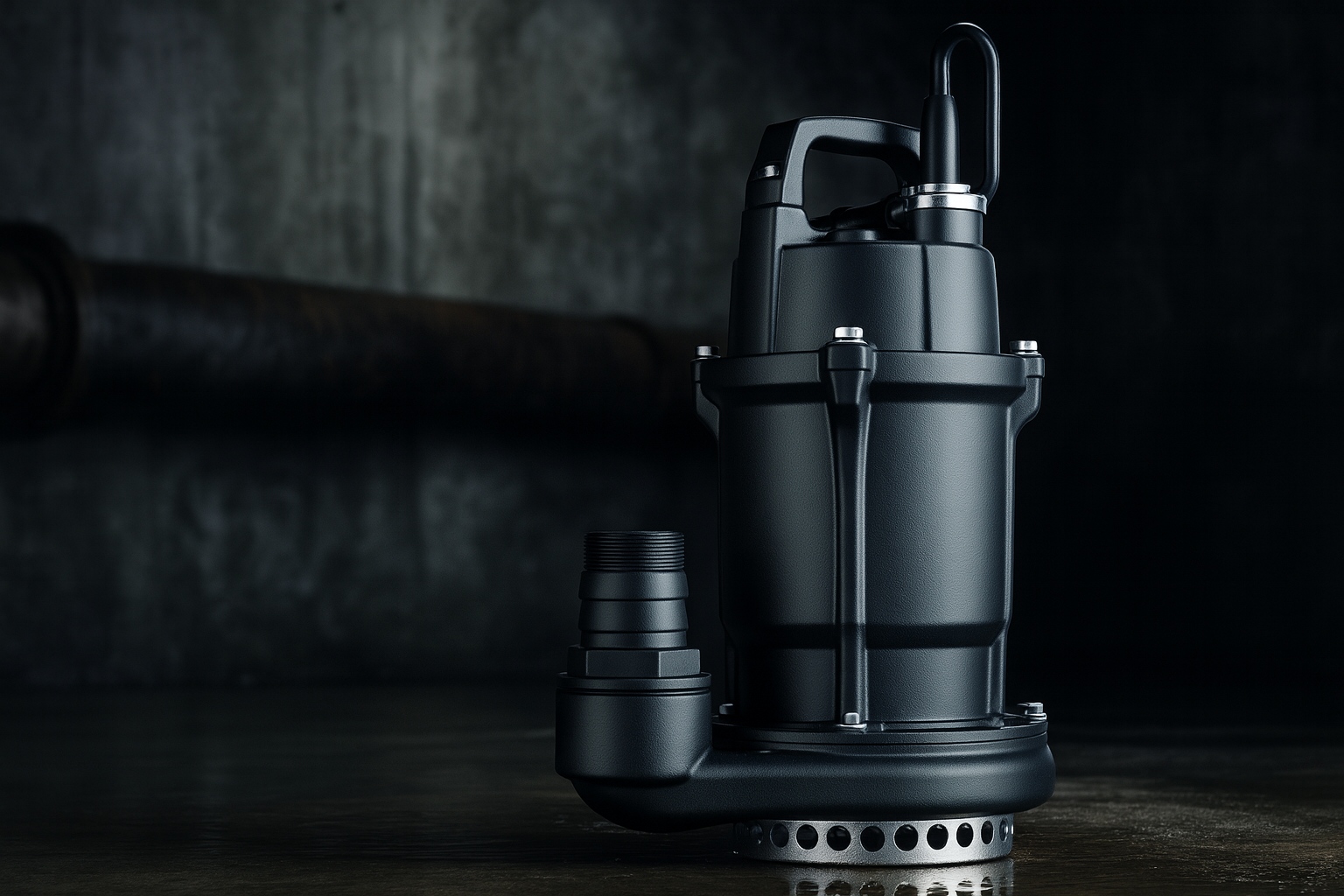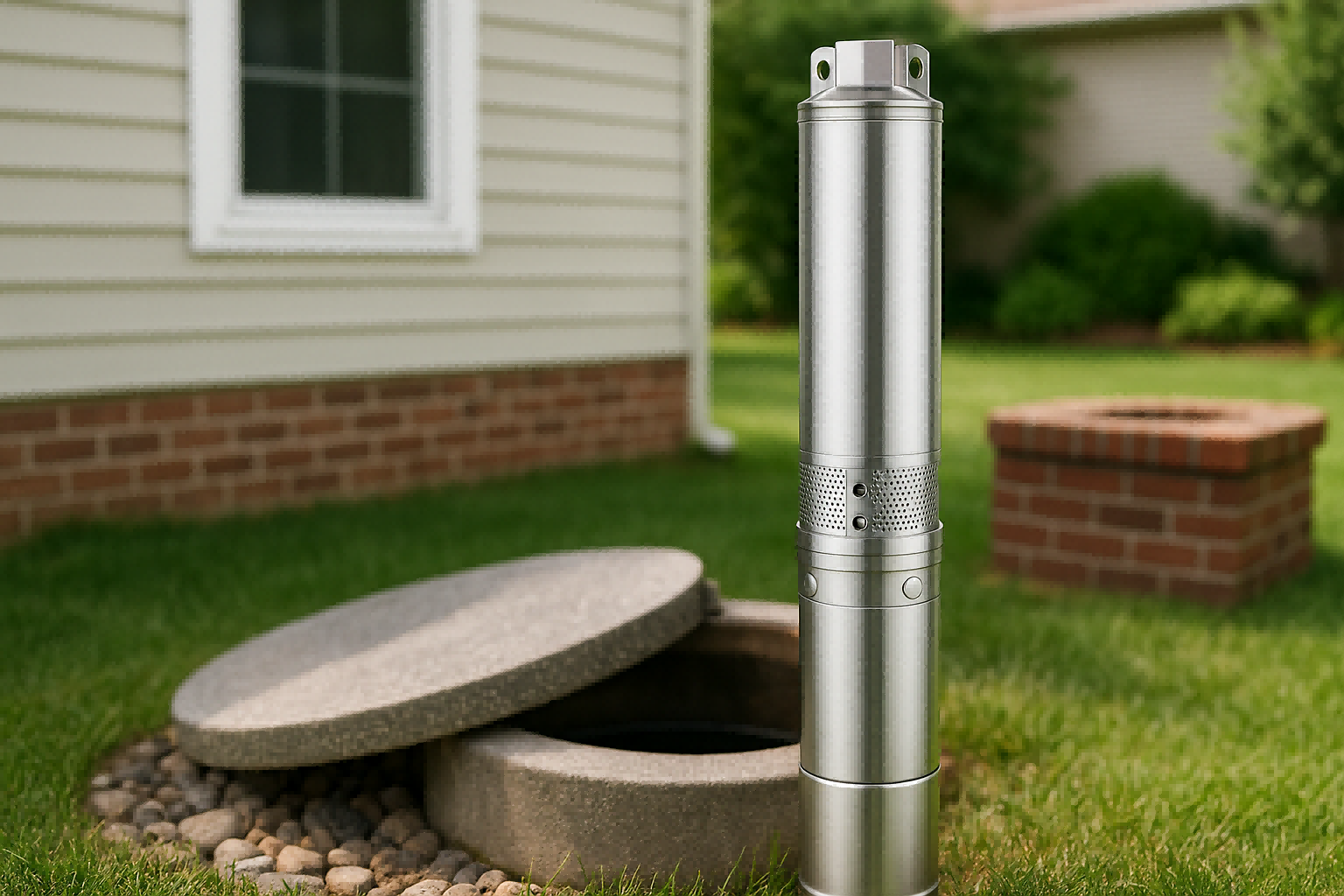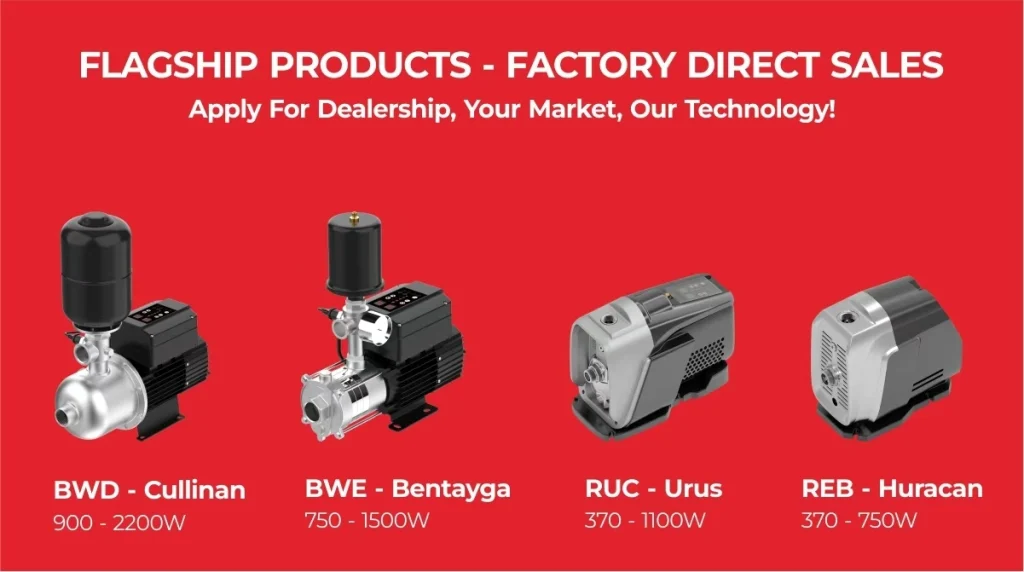Are you tired of weak water flow from your taps?
This frustratingly low pressure can ruin a shower and make simple tasks difficult.
A booster pump is the clear solution to this common problem.
There are several types of booster pumps, primarily categorized as centrifugal and positive displacement. Centrifugal types include single-stage, multistage, end-suction, and in-line pumps. Other common types include jet, peripheral, diaphragm, and electromagnetic pumps, each designed for specific pressure, flow, and application requirements.

Choosing the right booster pump is critical for achieving optimal performance and efficiency.
The selection depends heavily on your specific needs.
These needs can range from a small home to a large industrial facility.
To make an informed decision, it's essential to understand the fundamental differences between the main pump categories available on the market.
This guide will break down the common classifications and delve into a more detailed list of pump types to help you identify the perfect solution.
By understanding the technology behind each type, you can ensure your water system operates flawlessly.
Common Booster Pump Classification
Struggling to find a booster pump that meets high-pressure demands?
Without the right pump, systems can fail to deliver water to upper floors or remote locations.
This classification covers pumps built for high performance and specific installation needs.
This group includes horizontal and vertical multistage pumps for high pressure, end-suction pumps for flexible configurations, and in-line pumps for space-saving installations. Each is a centrifugal design, using impellers to build pressure and move fluid efficiently to the desired height.
This classification focuses on centrifugal pumps, which are the workhorses of the water-boosting world.
Each variant within this category offers unique advantages depending on the system's pressure requirements and physical constraints.
Understanding these four main types will provide a solid foundation for selecting a pump that excels in performance, reliability, and application suitability.
We will now explore each of these common centrifugal designs in greater detail.
Horizontal Multistage Centrifugal Pump
A horizontal multistage pump is a powerful solution for increasing fluid pressure.
It is specifically designed for liquids that are already in motion within a system.
These pumps feature multiple impellers arranged along a horizontal shaft.
Each impeller, or stage, adds pressure to the fluid as it passes through the pump.
This sequential pressure increase makes them ideal for applications requiring high discharge pressures but with relatively lower flow rates.
Their horizontal orientation can be beneficial for installations with overhead height restrictions.
Maintenance is often simpler as the motor and pump components are easily accessible.
Vertical Multistage Centrifugal Pump
A vertical multistage pump operates on the same principle as its horizontal counterpart.
It uses multiple impellers in series to generate very high pressures.
The key difference is its vertical orientation.
This design makes it extremely space-efficient.
It is the preferred choice for installations where floor space is limited, such as in compact mechanical rooms or cabinets.
These pumps are frequently used for lower volume flow applications that demand a significant pressure boost.
Their robust construction ensures reliability in continuous-duty applications.
End-Suction Centrifugal Pump
End-suction pumps are one of the most common and versatile types of centrifugal pumps.
They feature an axial inlet (the "end suction") and a radial outlet.
This straightforward design makes them highly configurable.
They can be adapted to a wide range of flow and pressure requirements.
For very high flow demands, these pumps can be installed in parallel.
This setup allows multiple pumps to work together, combining their flow rates to meet the system's needs.
They are known for their simplicity, reliability, and ease of maintenance.
In-Line Centrifugal Pump
An in-line pump, also known as a pipeline pump, is designed for direct installation into a pipeline.
Its inlet and outlet are on the same axis, allowing for a seamless fit within the existing pipework.
This design results in a much smaller installation footprint compared to other pump types.
The structure is simple and compact.
In-line pumps are an excellent choice for boosting pressure within an existing system without requiring major piping modifications.
They are commonly used in HVAC systems, domestic water boosting, and industrial circulation loops where space is a primary concern.
What Are the Types of Booster Pumps?
Is your current water system failing to meet pressure demands?
This can lead to inefficient operations in commercial settings and daily frustrations at home.
Understanding the broader range of pump types ensures you find the perfect match for any requirement.
Booster pumps include centrifugal, jet, peripheral, diaphragm, and electromagnetic types. Centrifugal and jet pumps are common for general water boosting, while peripheral, diaphragm, and electromagnetic pumps serve more specialized, high-precision applications in industrial, chemical, and medical fields.
While the common classifications cover many applications, a deeper dive reveals a more diverse array of pump technologies.
Each type is engineered with unique mechanisms to pressurize fluid, making them suitable for vastly different tasks.
From handling clean water in a high-rise building to moving sensitive chemicals in a laboratory, there is a specialized booster pump for the job.
Let's explore these five distinct types to understand their specific functions, advantages, and ideal use cases.
Centrifugal Booster Pumps
Struggling with inconsistent water pressure in your building or irrigation system?
This issue can lead to poor performance from appliances and uneven water distribution.
Centrifugal booster pumps are the go-to solution, offering reliable and powerful pressure enhancement for a wide variety of applications.
Centrifugal pumps use a spinning impeller to accelerate water, converting velocity into pressure. They come in single-stage models for moderate boosts and multi-stage versions for high-pressure needs. Their versatility makes them the most common choice for residential, commercial, and industrial water systems.
Centrifugal booster pumps are the foundation of modern water pressure systems.
Their operation is based on a simple yet effective principle.
Water enters the pump at the center of a rapidly spinning impeller.
The impeller's vanes catch the water and accelerate it outward using centrifugal force.
This action increases the water's velocity.
As the high-velocity water moves into the pump casing (volute), its speed is converted into high pressure.
The pressurized water then exits the pump, ready to be delivered where it's needed.
Modern advancements have significantly enhanced the performance and intelligence of these pumps.
Core Drive Technology
The heart of a modern, high-efficiency centrifugal pump is its drive system.
Leading models now integrate a Permanent Magnet Synchronous Motor (PMSM) with a Variable Frequency Drive (VFD).
This combination offers unparalleled control and efficiency.
- Constant Pressure: The VFD continuously adjusts the motor's speed to maintain a precise, stable water pressure, regardless of changes in demand.
- Energy Savings: By running the motor only at the speed needed, VFD-driven pumps can reduce electricity consumption by up to 50% compared to fixed-speed pumps.
- Soft Start/Stop: This function gradually ramps the motor speed up and down. It eliminates the sudden inrush of current and prevents hydraulic shock (water hammer), which extends the life of both the pump and the plumbing system.
Material and Mechanical Excellence
The durability of a centrifugal pump is determined by the quality of its components.
Top-tier pumps are built with materials engineered for longevity and performance.
| Component | Material/Feature | Benefit |
|---|---|---|
| Motor Stator | 600-Grade Silicon Steel | Reduces electrical losses and improves motor efficiency. |
| Insulation | Class F Insulation Wire | Provides high thermal resistance for reliability under heavy loads. |
| Bearings | Premium NSK/C&U | Offers quieter operation, higher precision, and longer lifespan. |
| Impellers | AISI304 Stainless Steel | Ensures excellent corrosion resistance and robust performance. |
These material choices directly translate to a longer operational life, quieter performance, and consistent reliability, which are critical factors for importers and distributors who need to guarantee quality to their customers.
Advanced Protection Systems
Intelligent booster pumps feature a comprehensive suite of electronic protections.
These systems act as a safeguard, monitoring operations in real-time to prevent damage from a wide range of potential faults.
Key protections include:
- Dry Run Protection: Detects a lack of water and stops the pump to prevent overheating and catastrophic failure. Smart systems use a multi-stage recovery algorithm, attempting to self-prime at intervals before shutting down.
- Electrical Safeguards: This includes protection against input voltage fluctuations (over/under), overcurrent, phase loss, and motor stalling.
- Thermal Protection: Monitors the temperature of both the electronics (driver board) and the water itself, shutting down if temperatures exceed safe limits.
- Frost Protection: Automatically runs the pump for short periods in freezing conditions to prevent ice from forming and damaging the pump.
A pump with a robust protection system provides peace of mind and significantly reduces the likelihood of warranty claims and costly service calls.
Jet Booster Pumps
Need to draw water from a well or underground tank?
Standard centrifugal pumps struggle with suction lift, making them unsuitable for these applications.
Jet pumps are specifically designed to solve this problem, creating the suction needed to pull water from significant depths.
Jet pumps combine a centrifugal pump with a jet ejector assembly. This design creates a strong vacuum, enabling the pump to draw water from shallow or deep wells. They are ideal for residential wells, irrigation, and boosting water pressure from storage tanks.
Jet pumps offer a unique solution for applications requiring suction lift.
Unlike a standard centrifugal pump that primarily pushes water, a jet pump is designed to both pull and push it.
It achieves this by circulating a portion of the pressurized water from the outlet back through a nozzle and venturi assembly, known as an ejector.
This high-velocity stream of water creates a vacuum, which draws more water from the source into the pump.
This mechanism allows jet pumps to be placed above the water source and still function effectively.
They are an excellent choice for homes and farms that rely on well water.
Shallow Well vs. Deep Well
Jet pumps are categorized based on the depth of the water source.
Peripheral Booster Pumps
Do you have an application that requires high pressure but has a low flow rate?
Many standard pumps are inefficient in these scenarios, wasting energy and providing poor performance.
Peripheral pumps, also known as regenerative or turbine pumps, are perfectly suited for these specialized, low-flow, high-pressure tasks.
Peripheral pumps use a unique impeller with many small vanes on its periphery. Liquid is picked up and re-energized by the vanes multiple times in a single rotation, generating very high pressure at low flow rates. They are ideal for boiler feeding and small-scale industrial processes.
The operation of a peripheral pump is distinct from a standard centrifugal pump.
The fluid enters the pump and is immediately caught by the small vanes on the edge of the spinning impeller.
As the impeller rotates, the fluid is spun in a circular path within the annular channel of the pump casing.
During this journey, the fluid repeatedly re-enters and is re-accelerated by the impeller vanes.
This regenerative action adds energy and pressure to the fluid with each pass.
The result is the ability to generate pressures up to ten times higher than a comparable centrifugal pump of the same size and speed.
This feature makes them invaluable in applications where pressure is the primary goal and volume is secondary.
Diaphragm Booster Pumps
Are you pumping fluids that are sensitive, abrasive, or cannot be exposed to mechanical parts?
Traditional pumps with rotating impellers and seals can contaminate or damage these types of liquids.
Diaphragm pumps offer a safe and reliable alternative, using a gentle, sealed pumping action.
Diaphragm pumps use a flexible membrane that moves back and forth to displace fluid. This design creates a sealed pumping chamber, making it ideal for high-purity applications, chemical dosing, and handling abrasive slurries, as the fluid never touches the mechanical components.
A diaphragm pump is a type of positive displacement pump.
Its mechanism is simple but highly effective.
A flexible diaphragm, typically made from rubber or thermoplastic, is connected to a piston or actuator.
As the diaphragm moves back, it expands the volume of the pumping chamber, creating a vacuum that draws fluid in through an inlet check valve.
When the diaphragm moves forward, it reduces the chamber's volume, forcing the fluid out through an outlet check valve.
Because the fluid is completely contained within the chamber and only contacts the diaphragm and check valves, there is no risk of contamination from lubricants or rotating parts.
This makes them essential in industries like food and beverage, pharmaceuticals, and wastewater treatment.
Electromagnetic Booster Pumps
Do you require the ultimate precision and control over fluid flow?
In medical, laboratory, and high-tech manufacturing, even tiny fluctuations in flow rate can be detrimental.
Electromagnetic pumps provide precise, pulseless flow by using electromagnetic forces to move fluid.
Electromagnetic pumps use a powerful magnetic field and an electric current to propel conductive fluids. With no moving parts in contact with the fluid, they offer exceptionally smooth, controllable, and sterile flow, making them perfect for medical devices, laboratory analysis, and liquid metal cooling.
Electromagnetic (EM) pumps are at the cutting edge of fluid transfer technology.
They operate on the principle of the Lorentz force.
To pump a conductive fluid, a magnetic field is applied across the pipe, and an electric current is passed through the fluid itself, perpendicular to the magnetic field.
This interaction creates a force that pushes the fluid along the pipe.
The key advantage is that this process involves no moving mechanical parts, such as impellers, pistons, or diaphragms.
This results in an incredibly reliable system with minimal wear and maintenance.
The flow can be controlled with extreme precision by simply adjusting the strength of the magnetic field or the electric current.
This level of control is indispensable in applications demanding absolute accuracy.
Conclusion
In summary, booster pumps range from common centrifugal types to specialized jet, peripheral, diaphragm, and electromagnetic models.
Understanding each one ensures the perfect fit for any pressure or application need.
FAQs
What is the difference between a booster pump and a regular pump?
A booster pump increases pressure in an existing system, while a regular pump moves water from a source. Boosters enhance flow; regular pumps create it.
Can a booster pump increase water pressure too much?
Yes, an incorrectly sized pump can create excessive pressure. Many modern pumps include VFDs and pressure sensors to regulate output and prevent system damage.
How do I know if I need a booster pump?
You likely need one if you experience consistently low water pressure, weak flow on upper floors, or poor performance from water-dependent appliances like showers and sprinklers.
Where should a booster pump be installed?
A booster pump is typically installed on the main water line after the water meter or pressure tank. This ensures it boosts pressure for the entire property.
Do water booster pumps use a lot of electricity?
Modern VFD-equipped booster pumps are highly energy-efficient. They adjust their speed to match demand, significantly reducing electricity consumption compared to older, fixed-speed models.
Are booster pumps noisy?
Older pumps can be noisy. However, new models with permanent magnet motors and advanced controls operate at very low noise levels, often under 50 decibels.
How long do booster pumps last?
A well-maintained, high-quality booster pump can last 10-15 years. Longevity depends on build quality, materials, and having protections against issues like dry running and voltage spikes.
Can I install a booster pump myself?
While some homeowners can, professional installation is recommended. This ensures correct sizing, proper electrical wiring, and integration with your plumbing system for safe, optimal performance.








